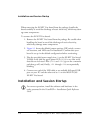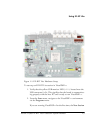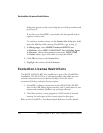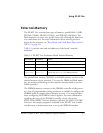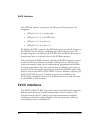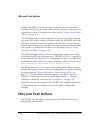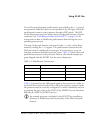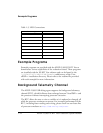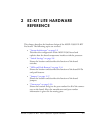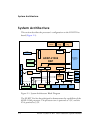
ADSP-21369 EZ-KIT Lite Evaluation System Manual 1-9
Using EZ-KIT Lite
The ELVIS interface is a LabVIEW-based design and prototype environ-
ment for university science and engineering laboratories. The ELVIS
interface consists of LabVIEW-based virtual instruments, a multifunction
data acquisition (DAQ) device, and a custom-designed bench-top work-
station and prototype board. This combination provides a ready-to-use
suite of instruments found in most educational laboratories. Because the
interface is based on LabVIEW and provides complete data acquisition
and prototyping capabilities, the system is ideal for academic coursework
that range from lower-division classes to advanced project-based
curriculums.
For more information on ELVIS and example demonstration programs,
visit National Instruments Web site at
www.ni.com.
Analog Audio
The AD1835A is a high-performance, single-chip codec featuring four ste-
reo digital-to-analog converters (DAC) for audio output and one stereo
analog-to-digital converters (ADC) for audio input. The codec can input
and output data with a sample rate of up to 96 kHz on all channels. A
192 kHz sample rate can be used with the one of the DAC channels.
The processor is interfaced with the AD1835A via the DAI port. The DAI
interface pins can be configured to transfer serial data from the AD1835A
codec in either time-division multiplexed (TDM) or two-wire interface
mode (TWI). For more information on the AD1835A connection to the
DAI, see “DAI Interface” on page 2-4.
The master input clock (
MCLK) for the AD1835A can be generated by the
on-board 12.288 MHz oscillator or can be supplied by one of the DAI
pins of the processor. Using one of the pins to generate the
MCLK, as
opposed to the on-board oscillator, allows synchronization of multiple
devices in the system. This is done on the EZ-KIT Lite when data is com-
ing from the SPDIF receiver and being output through the audio codec.
The SPDIF
MCLK is routed to the AD1835A MCLK in the processor’s signal






